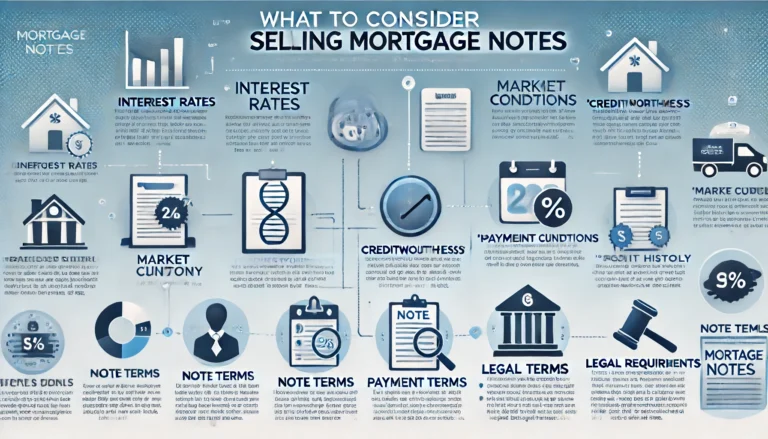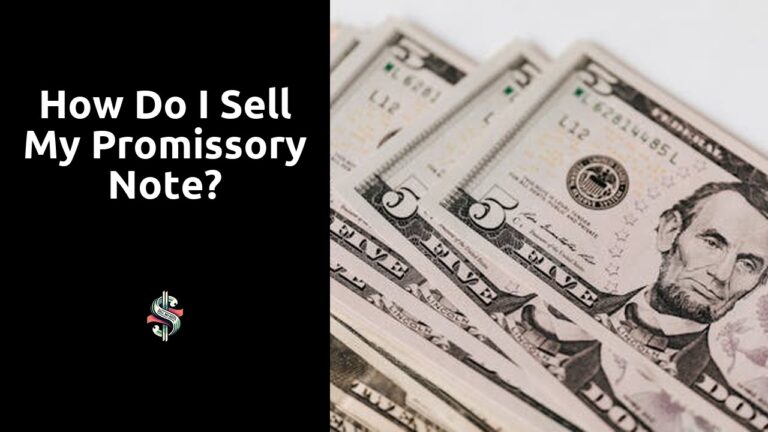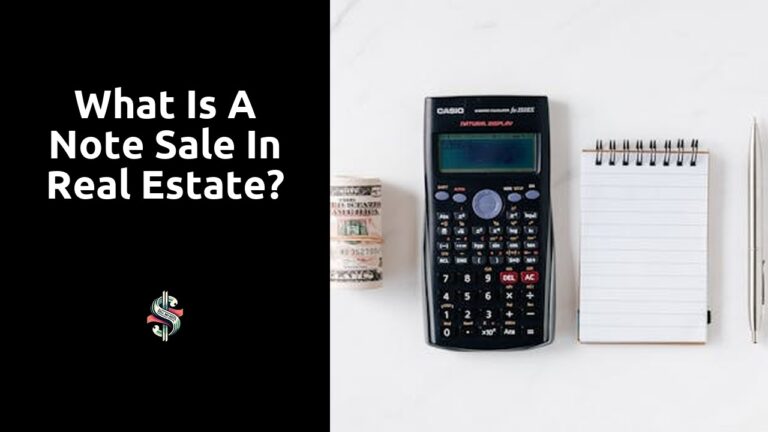How to Sell a Promissory Note
Negotiating the Sale Terms
Diving into the labyrinth of negotiating sale terms demands a meticulous approach, as one must juggle the intricate needs of both seller and buyer. First off, grasping the essence of the note’s value is paramount—like deciphering an enigmatic puzzle. Considerations swirl around like autumn leaves: interest rates that fluctuate with market whims, repayment schedules that may shift unexpectedly, and the borrower’s financial stability that serves as a cornerstone in this delicate dance of valuation.
Open dialogue between both parties becomes essential; it’s not just about throwing numbers around but rather weaving expectations regarding price and payment terms into a coherent tapestry that resonates with both sides. This transparency cultivates trust—a rare commodity in negotiations—and keeps misunderstandings at bay.
Preparation reigns supreme here; gathering all pertinent documentation beforehand—including that pivotal promissory note alongside any related agreements—sets the stage for clearer conversations. With everything laid out on the table, discussions can flow more smoothly when contemplating adjustments to those crucial terms. And let us not overlook clarifying roles: determining who shoulders closing costs or commissions can work wonders in easing tensions and paving the way toward an outcome where both parties emerge feeling victorious from this intricate negotiation ballet.
Key Considerations When Discussing Sale Terms
When diving into the labyrinthine depths of promissory note sales, one cannot underestimate the imperative of pinning down an accurate valuation. The intricate dance of elements—remaining balance, interest rate quirks, repayment timelines that twist and turn like a winding road, and the elusive creditworthiness of the borrower—must all be meticulously weighed. A comprehensive dissection of these factors is essential for unearthing a fair market price while laying solid groundwork for negotiations that can sometimes feel like navigating through fog.
But wait! That’s not all; let’s pivot to another critical facet: the payment structure itself. Sellers must illuminate whether this transaction will unfold as a singular lump sum or meander through structured payments over time—don’t forget to sketch out those crucial timelines for transfer! And lurking just beneath the surface are potential contingencies that demand attention—the borrower’s capacity to meet their obligations or unforeseen scenarios threatening to upend future performance metrics of the note. By establishing clarity around these pivotal points, you’re not merely fostering trust; you’re crafting a roadmap toward seamless negotiations and smoother transactions amidst what could easily become chaotic waters!
Legal Aspects of Selling a Promissory Note
When diving into the intricate world of selling a promissory note, one must grasp the labyrinthine legal landscape that governs these transactions. Ah, promissory notes—they’re not just mere pieces of paper; they are legally binding financial instruments, meticulously detailing the terms surrounding loans and indebtedness. But hold on! The validity of such documents doesn’t just float freely in the ether; it hinges precariously on compliance with state laws—laws that can impose peculiar requirements regarding everything from structure to language to execution. It’s imperative for all parties involved to ensure that every term etched within those pages is crystal clear and enforceable.
Now, let’s talk about what happens when ownership of this note changes hands—a process ripe with implications! Typically, this involves either endorsing the note itself or drafting up a separate assignment document. And here’s where it gets interesting: you might need to give a heads-up to the borrower. Why? Because notifying them guarantees that future payments will flow smoothly into the coffers of the new holder instead of getting lost in limbo. So don’t skip out on due diligence! Scrutinizing the legal status of that note—including verifying its authenticity and uncovering any lurking liens—is absolutely vital if you want to shield yourself against potential disputes down the line.
Understanding the Legal Framework
When it comes to offloading a promissory note, grasping the intricate legal landscape that envelops these transactions is absolutely vital. One must dive into the depths of the Uniform Commercial Code (UCC), that labyrinthine framework which lays out the rules for transferring negotiable instruments like promissory notes. The seller—yes, that’s you—has to be certain that this financial document isn’t just a piece of paper but an enforceable promise, properly endorsed and ready for action, lest they tumble into a quagmire of legal issues.
But wait! It doesn’t end there; one must also navigate the murky waters of state-specific laws that can sway this sale in unexpected ways. Each state has its own peculiarities, creating a patchwork quilt of regulations that could either bolster or undermine your transaction’s legitimacy.
And here’s where things get even more interesting: both parties involved ought to think about crafting a formal agreement—a blueprint if you will—that meticulously delineates every facet of the sale. We’re talking specifics: purchase price? Check. Payment terms? Absolutely! Any special conditions tied to transferring ownership? You bet! This formality not only acts as armor against potential disputes but also serves as an unequivocal record etched in legal stone.
Now, let’s not overlook wisdom’s gentle nudge—consulting with a seasoned legal expert who specializes in financial transactions can be your guiding star through this complex maze. They’ll help ensure you’re ticking all those regulatory boxes while deftly protecting your interests along the way. Because when it comes down to it, being well-prepared is half the battle won!
Closing the Sale
Finalizing the transaction is no small feat; it demands meticulous attention to detail and a strict adherence to established protocols. Both buyer and seller must engage in a thorough confirmation process, ensuring that every necessary document is not just prepared but also meticulously reviewed. We’re talking about the promissory note, related agreements, and proof of the buyer’s financial capacity—each one a cog in this intricate machine. Enlisting the help of a seasoned attorney or financial advisor can be invaluable, providing peace of mind that all legal nuances are properly navigated. It’s crucial: accurate completion of these documents acts as a bulwark for both parties’ interests.
Now enter the closing meeting—a pivotal moment where funds change hands and final paperwork gets signed with an air of gravity. Here, it becomes essential for the seller to confirm receipt of payment as stipulated; there’s no room for missteps here! On their end, buyers must ensure they walk away clutching that original promissory note alongside any other pertinent documentation like prized trophies. Once signatures adorn those vital documents and cash has exchanged hands, each party should retain copies—evidence etched into memory forevermore. This diligent approach doesn’t merely smooth out potential bumps at closing; it lays down roots for what could blossom into an enduring relationship between buyer and seller—a partnership forged in precision amidst complexity.
Steps to Finalize the Transaction
Once both parties reach a consensus on the sale’s terms, it’s absolutely essential to whip up a formal agreement that lays bare every facet of the transaction. This vital document ought to encapsulate the sale price, payment conditions, and any contingencies lurking in the wings. Ensuring clarity among all involved helps stave off future disputes—nobody wants those! Legal jargon must be crystal clear and straight to the point; ambiguity has no place here.
Following the signing of this pivotal agreement, we dive into transferring the promissory note over to the buyer. This step usually calls for the seller to formally endorse said note, signaling that rights are now passing hands. It might be wise to rope in a notary public for some extra authentication magic during this process. Once everything’s transferred and sealed with signatures, both parties should diligently hang onto copies of all documents tied to this sale—because who doesn’t love keeping records?
| Document Type | Description | Required Signatures |
|---|---|---|
| Sale Agreement | A formal document outlining the sale price, payment conditions, and any contingencies. | Both Buyer and Seller |
| Promissory Note | A written promise to pay a specified amount of money, signed by the buyer. | Buyer |
| Endorsement | The act of signing the promissory note by the seller to transfer rights to the buyer. | Seller |
| Notarized Document | A document that includes a notary’s certification to verify authenticity. | Notary Public |
Tax Implications of Selling a Promissory Note
Diving into the world of selling a promissory note? Buckle up, because it’s not just an ordinary transaction; it comes with a twist of tax implications that could leave your head spinning. When you part ways with that note, you might find yourself needing to disclose any gains or losses from the sale—a process that’s anything but straightforward. The cash you pocket is usually classified as capital gains, and yes, you guessed it—capital gains tax could be knocking at your door.
Now hold on! Before you get swept away in tax jargon, it’s crucial to grasp what your basis in the note actually is. That little number will play a pivotal role in figuring out how much profit is taxable when all’s said and done. If by some stroke of luck—or perhaps savvy investing—the value of that note has skyrocketed since its inception, be prepared: Uncle Sam wants his cut of that increase!
But wait—there’s more! Sellers should keep their eyes peeled for how this sale might ripple through their entire tax landscape—especially if they’re dealing with a hefty sum attached to that note. Reporting obligations can dance around depending on various factors, so tapping into the wisdom of a tax professional may illuminate those murky regulations tailored specifically for your situation.
And don’t forget about paperwork! Keeping meticulous records and reporting promptly isn’t just good practice; it’s essential for staying on the right side of compliance and dodging nasty penalties or unexpected audits lurking in the shadows. So gear up—you’re navigating through financial waters fraught with both opportunity and potential pitfalls!
What You Need to Know About Taxes
The financial landscape of selling a promissory note is riddled with tax implications that can dramatically skew the outcome. Picture this: if you offload your note for anything above its original value, brace yourself—capital gains tax might come knocking at your door. The formula for determining your gain? It’s not as straightforward as it seems; it’s all about the difference between what you sell it for and what you’ve invested in it, which typically encompasses acquisition costs and any payments you’ve pocketed before making the sale.
Now, here’s where things get intricate: sellers must be meticulous in keeping track of every transaction linked to that promissory note. You’ll need to document everything—from the initial loan amount to each payment received, right through to that final sale price. And let’s not forget about enlisting a tax professional’s expertise; they can shine a light on how this sale intertwines with your larger tax picture. Grasping these nuances isn’t just smart—it’s essential for staying compliant and sidestepping those nasty surprises during tax season!
- Understand the difference between ordinary income and capital gains.
- Keep detailed records of the loan amount, payments received, and the sale price.
- Consult a tax professional to ensure you’re aware of all applicable taxes.
- Familiarize yourself with the holding period of the note to determine tax rates.
- Be prepared to report any cash flows related to the note on your tax return.
- Explore tax deductions that may apply to your situation with your tax advisor.
- Stay informed about changes in tax laws that could affect your sale.
Post-Sale Considerations
After unloading a promissory note, one must dive deep into the tangled web of ongoing responsibilities tied to that transaction. The seller, in this labyrinthine process, ought to meticulously document every detail of the sale—marking down the date when it all went down, noting the selling price with precision, and gathering every piece of related paperwork. This treasure trove of information isn’t just for show; it’s pivotal come tax time and could be your lifeline during any inquiries about how things stand with that elusive note.
But wait! There’s more! Keeping tabs on any lingering obligations or settlements is like watching over a fragile ecosystem—it ensures everything stays in harmony with those pesky terms and conditions. And let’s not forget about communication! It would be wise for the seller to keep an open channel with the buyer, especially if there are ongoing payments looming in their future or other financial intricacies at play. A solid line of dialogue can pave the way for navigating potential adjustments down the road.
Yet there’s another layer: continuously scrutinizing how this sale fits into one’s broader financial tapestry is crucial. Does it mesh well with those lofty investment aspirations? Grasping these nuances not only sheds light on current standing but also empowers savvy decision-making as new financial adventures beckon from around the corner. Embrace this complexity; it’s where true mastery lies!
Managing the Aftermath of the Sale
Once the ink dries on the sale of a promissory note, a dance of communication begins—a vital choreography for both sellers and buyers to navigate this transition smoothly. The seller, armed with an arsenal of essential documents, must unveil every scrap of information about the note: payment history, original terms—everything that paints a clear picture. This openness is crucial; it instills confidence in the buyer’s decision while casting light on any shadows of doubt or lingering questions.
But wait! Sellers are not mere passive participants in this ballet. They need to keep their pulse on the transaction’s rhythm, ensuring payments flow as promised in that sacred agreement. Staying accessible for inquiries isn’t just advisable—it’s imperative! Being ready to leap into action with follow-up documentation can transform potential hiccups into harmonious resolutions. Such proactive measures don’t merely stave off misunderstandings; they cultivate a professional rapport that could blossom into future collaborations down the line.
Conclusion
Navigating the sale of a promissory note isn’t just a straightforward task; it’s a labyrinthine journey filled with twists and turns, requiring meticulous attention to an array of factors—from the art of negotiation to the intricate web of legal compliance. Grasping the fundamental components that underpin this sale process is what paves the way for a more seamless transaction, all while steering clear of those lurking pitfalls.
Yet, let’s not overlook the reverberations that follow in the wake of such a sale. The shadows cast by tax implications loom large, and one must grapple with managing ongoing financial obligations once everything is finalized. Every decision made throughout this intricate dance plays a pivotal role in crafting an informed and strategically sound transaction—a symphony where each note matters.







